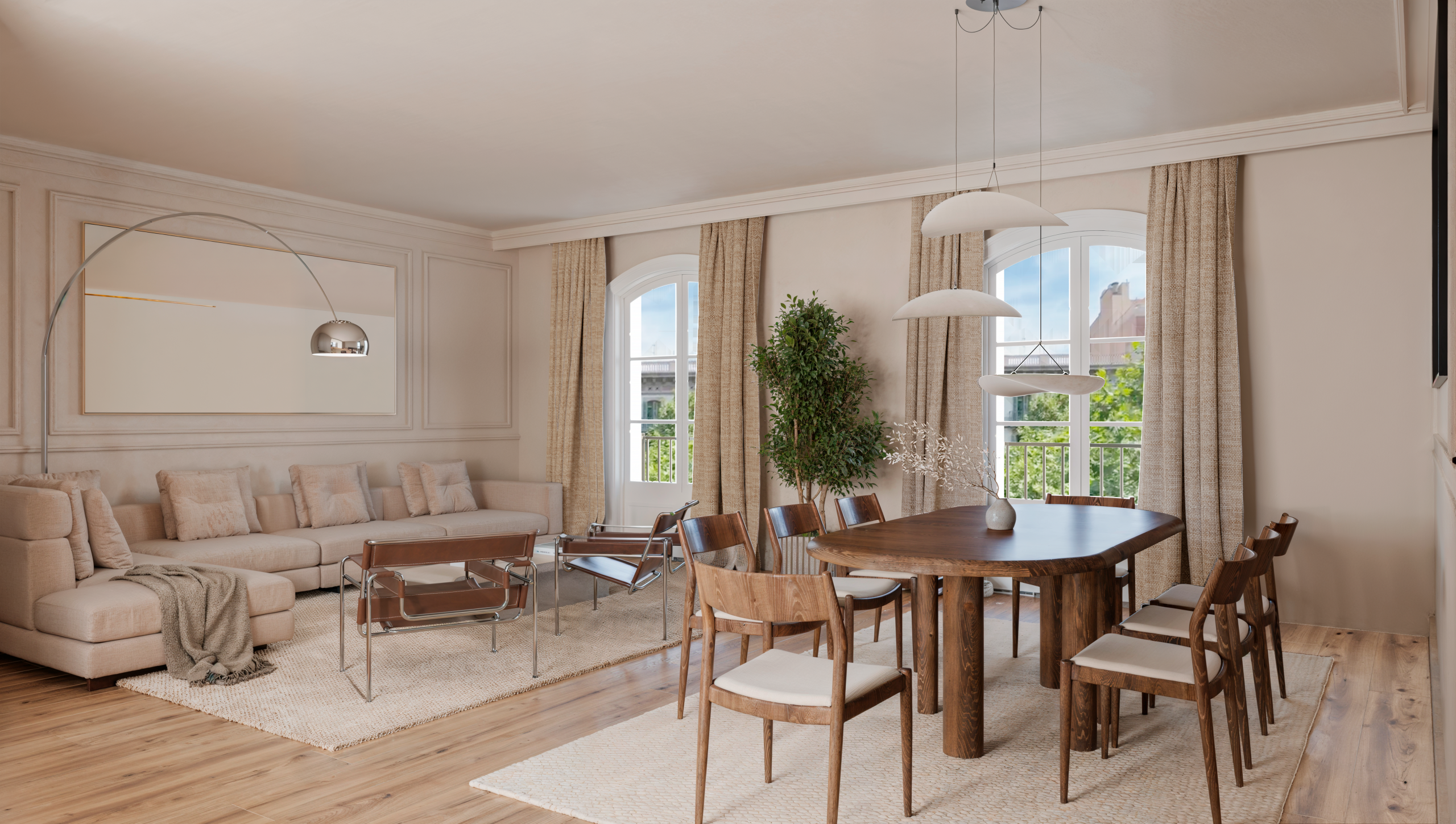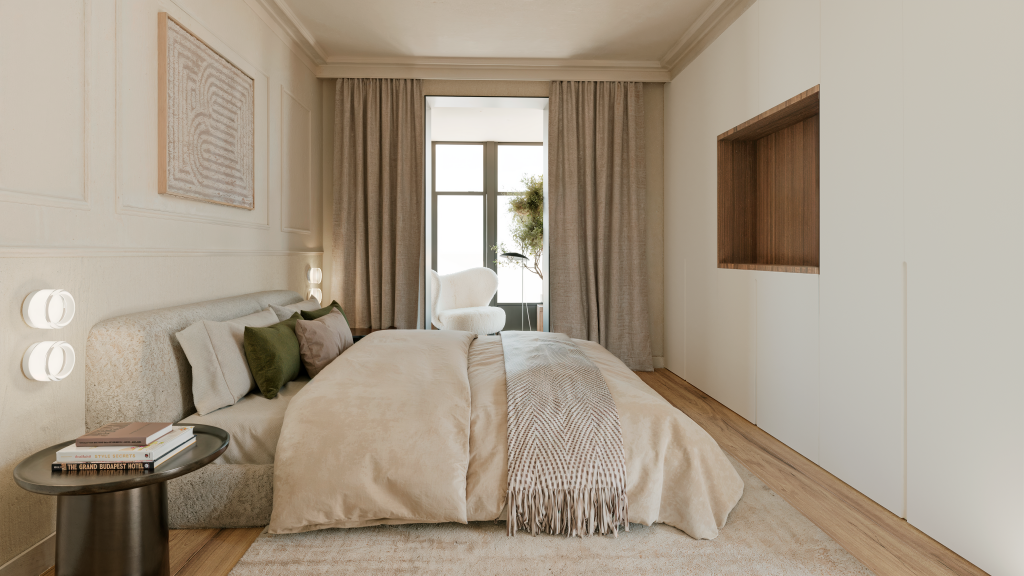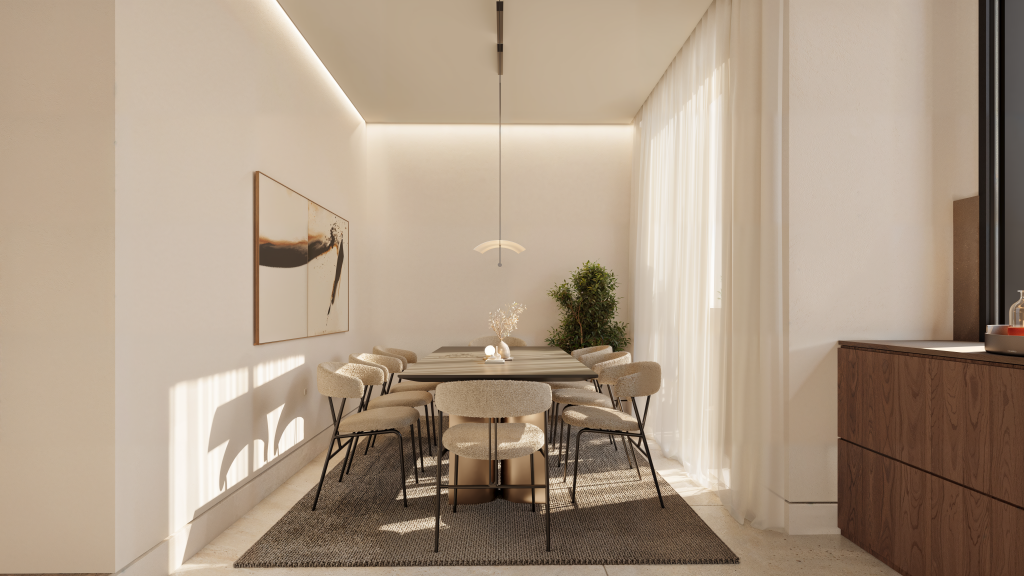From the Traditional Catalogue to the Power of Digital Furniture
Printed catalogues belong to another era. Today, the spotlight is on digital furniture, where the image doesn’t just display a product, it tells a story.
The most visionary brands are transforming their creations into immersive environments, where materials, light, and proportions merge to evoke authentic emotions and make a collection’s identity tangible.
Digital furniture design opens the door to an interactive universe: every creation can be explored, zoomed in on, and customized until the viewer can almost feel its texture.
Through cutting-edge 3D visualization and Rendering software, collections achieve a level of realism that surpasses traditional photography, ushering in the future of emotional marketing and interior design.
How Rendering Became Part of the Furniture Market
The integration of digital modeling in the furniture industry was a natural, almost inevitable evolution.Brands investing in digital furniture design have discovered a tool that unites efficiency with storytelling, technology with brand identity.
Today, every piece of 3D interior furniture can be presented in countless variations of materials, finishes, and lighting conditions without ever producing a physical prototype.
Thanks to 3D visualization, creative teams can analyze market trends, test audience preferences, and develop more informed strategies; all while producing high quality 3D designs and detailed 3D visuals that adapt perfectly to any platform, from e-commerce to trade fairs. The result is a richer, more recognizable visual narrative that builds trust, enhances perceived quality, and communicates the distinctive personality of each brand.
Why It Reduces Costs and Maximizes Results
What does it truly mean to make smarter decisions in a digital context?
It means rethinking how ideas are created and communicated, allowing 3D furniture to become a direct bridge between imagination and reality.
From a single 3D model, brands can generate endless 3D renders, sets, or even 3D videos without producing or photographing anything physically. This new language of digital furniture design delivers immediate, measurable results: it cuts logistics costs, eliminates transportation needs, and allows brands to adapt digital catalogues to different markets and languages in just a few clicks. Even better, everything evolves in real time. Collections update continuously;with no reprints, no delays, and no boundaries. Rendering opens a creative and operational space that no traditional process could ever match.
The Future of Digital Furniture and Its Impact on Brands
If digital furniture is already part of the present, the future promises an even deeper transformation. 3D visualization will continue to evolve into increasingly immersive and interactive experiences. Brands will rely on interactive platforms that allow customers to personalize materials, colors, and finishes in real time. The digital design of furniture will no longer be optional but will become the universal language of innovation, sustainability, and excellence. Those who choose to integrate 3D Rendering into their strategy today are not following the change, they are leading it.
What is 3D visualization in furniture design?
3D visualization refers to the process of creating lifelike digital representations of furniture using Rendering and CGI technology. Through 3D models and Photorealistic 3D visuals, a CGI company or a team of 3D artists can display an entire collection in realistic environments, without ever manufacturing a physical prototype.
How does Rendering improve interior design presentations?
Rendering transforms traditional presentations into immersive storytelling experiences. For interior design professionals, it allows the creation of custom 3D interior renderings that highlight textures, materials, and lighting conditions with unmatched realism. These high quality 3D designs help brands and clients visualize every detail before production begins.
What are the advantages of 3D renders compared to photography?
Unlike traditional photography, 3D renders offer flexibility and precision. They allow changes in lighting, color, and composition instantly, saving time and production costs. For sectors like KBB Retail Renders (kitchen, bathroom, bedroom), 3D visualization enables brands to showcase endless design variations without physical prototypes.
How can CGI and 3D animations help brands sell more effectively?
CGI and 3D animation services help brands create dynamic presentations that capture attention and drive conversions. Through 3D animations and 3D videos, furniture can be presented in motion, highlighting functionality, scale, and emotion. These detail 3D visuals elevate brand perception and increase engagement across digital platforms.
What is the role of 3D artists and CGI companies in this process?
3D artists and CGI companies play a crucial role in transforming design concepts into market-ready assets. They combine creativity and technical expertise to produce photorealistic 3D visuals, custom 3D interior renderings, and 3D animations that reflect the essence of each brand while optimizing costs and production times.





